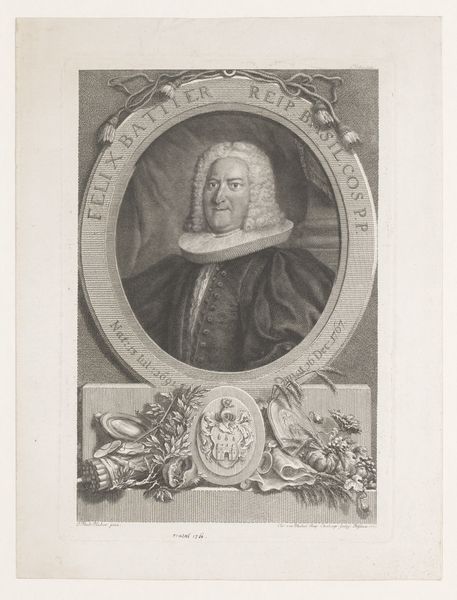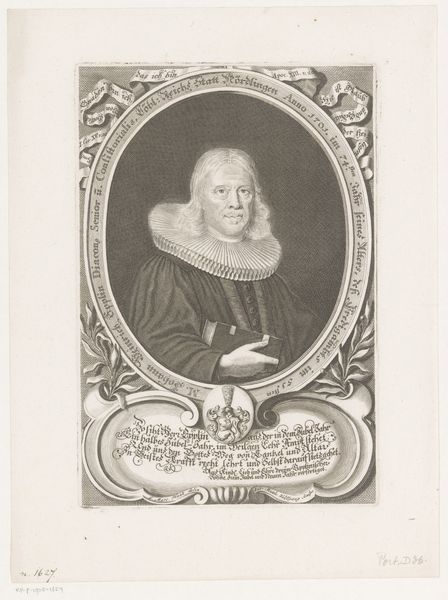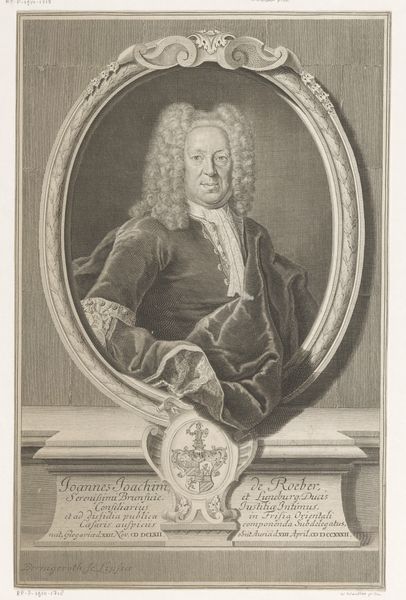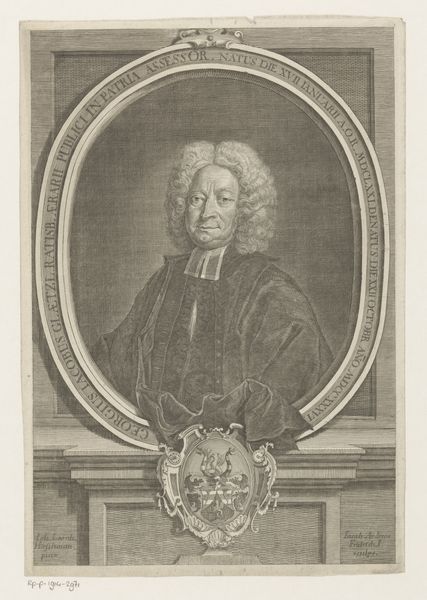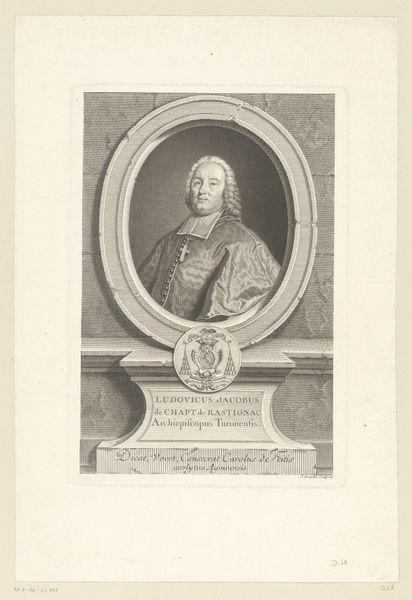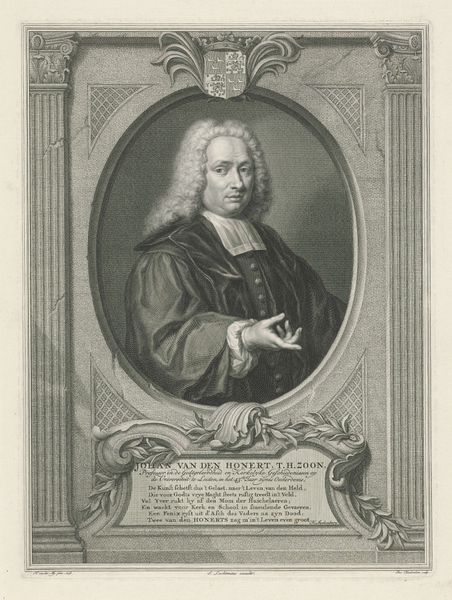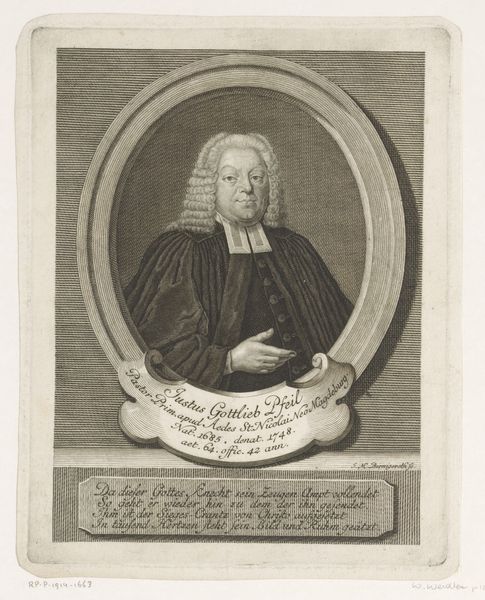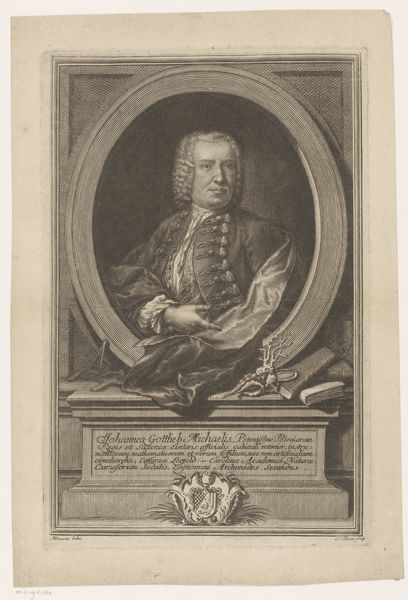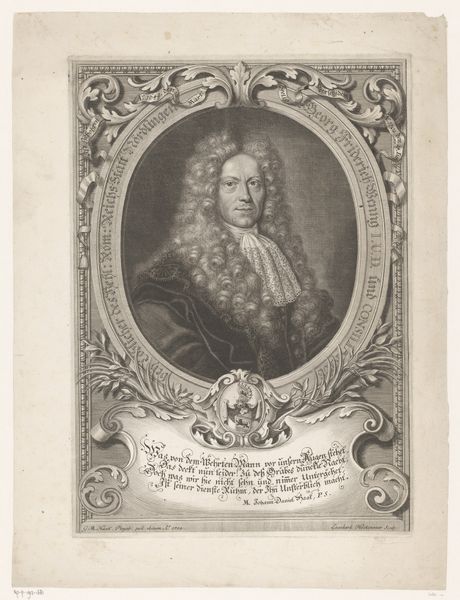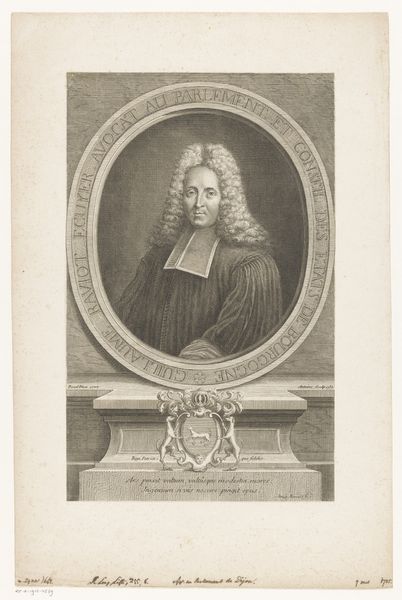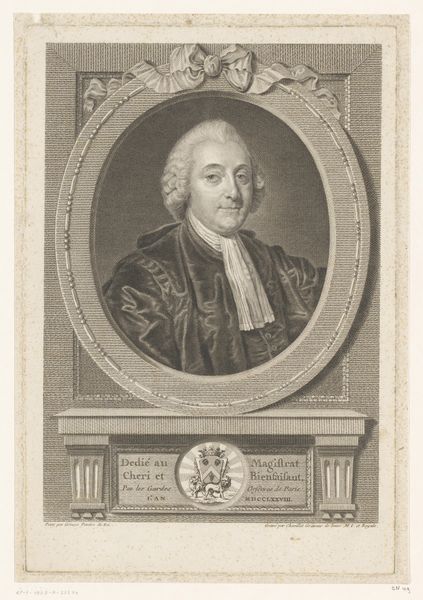
Dimensions: height 420 mm, width 319 mm
Copyright: Rijks Museum: Open Domain
This print, depicting Giovanni Colombo, Chancellor of Venice, was made by Carlo Orsolini, who was active in the 18th century. It's an etching, a process that begins with a metal plate, usually copper or zinc. To create an etching, the artist coats the plate with a waxy, acid-resistant substance called a ground. They then draw through the ground with a sharp needle, exposing the metal beneath. The plate is then immersed in acid, which bites into the exposed lines, creating grooves. These grooves hold the ink, which is then transferred to paper under high pressure in a printing press. Looking closely, you can see a network of fine lines, which define the contours of Colombo's face, wig, and robes. The density and direction of these lines create shading and texture, giving the portrait depth. The etching process allowed Orsolini to capture fine detail and subtle nuances of light and shadow. Considering the social context, printmaking was a key method for disseminating information and images. This etching served as a means of portraying and celebrating a prominent figure in Venetian society. So when you look at the print, think about the labor involved, and the cultural work it performs.
Comments
No comments
Be the first to comment and join the conversation on the ultimate creative platform.
